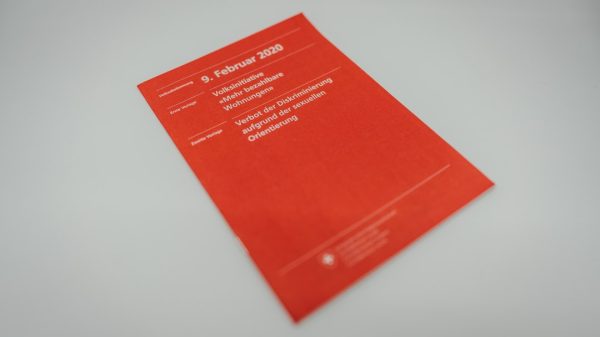Managing rental properties requires keen attention to detail, especially when it comes to financial tracking. Whether you’re a self-managing landlord or a professional property manager, maintaining an accurate rental ledger is essential. A rental ledger serves as a detailed record of rental payments and other transactions between the tenant and landlord or property manager. The needs of a landlord may differ significantly from those of a property manager when it comes to selecting the right rental ledger template. Understanding these distinctions can make the difference between smooth operations and financial confusion.
Understanding the Purpose of a Rental Ledger
A rental ledger isn’t just a tool; it’s a legal document that can demonstrate payment history, resolve disputes, and provide insights into property performance. It typically contains information such as the tenant’s name, the rental period, the amount paid, payment dates, outstanding balances, and sometimes notes on communication or maintenance issues.
This document plays a critical role not only in daily management but also during audits, evictions, property sales, or when applying for loans using the property as collateral. Because of its central importance, choosing or creating the right rental ledger template requires thoughtful consideration of the unique requirements of landlords and property managers.
Key Elements of a Rental Ledger Template
Before we dive into the unique needs of landlords versus property managers, let’s look at the standard components that should be found in every rental ledger template:
- Tenant Name and Contact Information
- Property Address or Unit ID
- Lease Start and End Dates
- Rent Amount Due and Due Date
- Payment Date and Amount Paid
- Payment Method (e.g., bank transfer, check)
- Balance Forward or Outstanding Balance
- Notes or Comments (such as late fee notices or partial payments)
These components create a full picture of each tenant’s payment history and can assist in both day-to-day management and long-term reporting.
Landlord Needs in a Rental Ledger Template
Independent or small-scale landlords often manage only a few properties and value simplicity and clarity in their rental ledgers. Their focus tends to be on oversight, income tracking, and legal protection. Here’s what landlords typically look for:
1. Simplicity and Accessibility
Landlords may not use property management software or advanced accounting systems. Therefore, a rental ledger template should be easy to use—often in formats like Excel, Google Sheets, or even printable PDFs. Usability is key.
2. Visual Overview
Color-coded status indicators (such as green for paid, red for overdue) and simple calculations help landlords quickly assess the financial health of each unit. Visual tools support better decision-making and easier communication with tenants.
3. Legal Readiness
In disputes or court proceedings, a well-maintained ledger proves timely payments or past due amounts. Templates for landlords often include areas for late payment fees, written notices, and links between payments and lease obligations.
4. Manual Entry Friendly
Since many private landlords handle payments manually, they need a ledger that supports flexibility. Auto-calculations should be included, but manual overrides must be possible for correcting errors or applying special discounts.
Property Manager Needs in a Rental Ledger Template
Property managers usually operate at a larger scale and often manage properties on behalf of other landlords. Their priorities shift toward efficiency, reporting capabilities, and compliance. Key features that benefit property managers include:
1. Multi-Tenant and Multi-Property Tracking
Property managers need templates that consolidate information across numerous tenants and properties. This means advanced filtering, sorting, and batch entry capabilities are crucial. A master sheet referencing individual ledgers might be used to provide an at-a-glance financial overview.
2. Integration with Accounting Systems
Professional property managers often need seamless integration with accounting platforms such as QuickBooks, AppFolio, or Buildium. Export and import functions, transactional codes, and API-friendly formats are often required in their ledger templates.
3. Audit Trails and Compliance
Given the fiduciary responsibility of managing someone else’s property, property managers must uphold compliance standards. Rental ledgers need to provide audit trails, show transparent calculations, and meet local regulatory requirements for documentation.
4. Custom Reporting
Templates used by property managers should support advanced reporting functions—rent collection rates, delinquency trends, monthly performance summaries, etc. These metrics are often shared with property owners and stakeholders.

Comparison: Landlord vs Property Manager Requirements
| Feature | Landlord | Property Manager |
|---|---|---|
| Usability | Simple, manual entry, spreadsheet-based | Professional, software-compatible, scalable |
| Number of Units | Typically 1–10 | 10 to hundreds |
| Legal Documentation | Basic notes and fee tracking | Full audit trail, documentation logs |
| Reporting Needs | Personal use, tax prep | Investor reporting, regulatory audits |
Choosing the Right Template
Because the needs clearly differ, choosing the right rental ledger template begins with identifying the user’s role and volume of operations. Here are a few actionable tips:
- Start Basic: If you’re a landlord, begin with a free or budget-friendly Excel or Google Sheets ledger template until your needs evolve.
- Scale with Software: Property managers dealing with a growing portfolio should consider professional property management software that includes integrated ledger tools.
- Local Compliance: Ensure your templates align with any local rental laws. For example, some jurisdictions require more detailed transaction histories or specific notice policies.
- Backup and Security: Always maintain up-to-date backups, especially when using manual methods, and ensure data is stored securely with restricted access where applicable.
Many websites offer customizable templates tailored to either individual landlords or full-service property managers. Still, users should always review the structure to ensure it fits their specific operational, legal, and financial needs.
Final Thoughts
The rental ledger is more than just a payment tracker—it’s a foundational record that supports the integrity of rental operations. While landlords prioritize flexibility and simplicity, property managers demand scalability and regulatory compliance. Each approach to managing properties brings its own expectations to the role, and selecting the most suitable rental ledger template serves as a critical step in successful rental property management.
Regardless of scale, a well-maintained ledger supports transparency, builds trust with tenants, and ultimately helps reduce financial risk. By understanding the distinct needs of landlords versus property managers, real estate professionals can ensure more accurate, efficient, and legally sound bookkeeping practices.

































